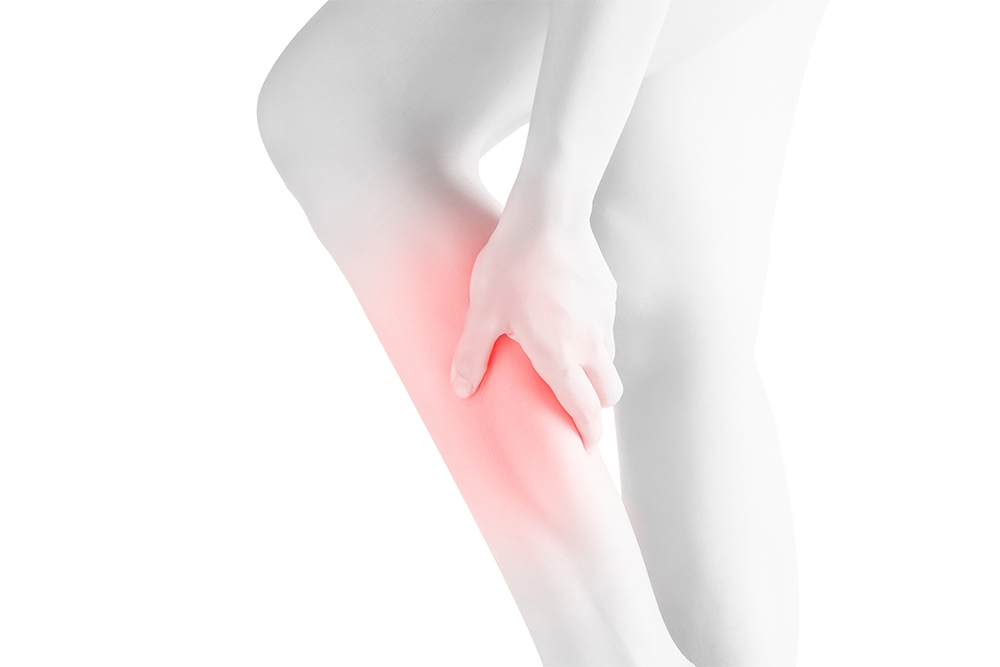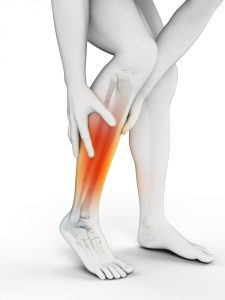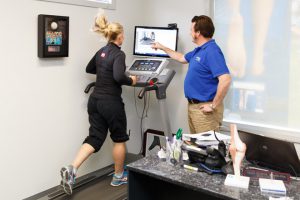

Netball is the most popular female sport in Australia, with both women and children participating in the high-intensity, fast-paced game. With every quick sprint, dodge, ball intercept or ‘break’, comes the potential for injury.
During every netball season, as the season progresses, intensifies and the expectations at training, game days and carnivals rise, our podiatrists see a myriad of new aches and pains; with one of the most common being shin splints.
The high prevalence of shin splints among netballers is due to the many bursts of rapid acceleration, sudden and swift changes in direction throughout the game, and the hard surfaces of the courts. If you don’t have very good netball shoes or your shoes don’t match the level of support that your feet and legs need, this can increase your risk of shin splints further.
 How to tell if you’re experiencing shin splints
How to tell if you’re experiencing shin splints
- You’re getting pain along the front and inside of your lower leg
- The front of your legs feel stiff or swollen
- Exercising and stretching exacerbates your symptoms
- Your pain reduces once you have warmed up, but returns once you have cooled down
If your pain continues from the start of a game to the finish, this may indicate either a more severe case of shin splints, or possibly that you either have a stress fracture at the shin bone or a condition called compartment syndrome. It is recommended to seek a professional diagnosis in any case.
What are shin splints?
Also known as Medial Tibial Stress Syndrome (MTSS), the term ‘shin splints’ is colloquially used to describe pain from a few inches above the ankle, to halfway up the shin bone. The symptoms are caused by stress or strain on the muscles that attach to the shin bone (tibia), or by excess force on the bone itself. This may mean damage or inflammation to the muscles that attach to the shins or the tissue that lines the bone.
Shin splint pain is often described as “too much, too soon”, with those starting intense netball training sessions without the right preparation or lead-up often developing the problem. Other contributing causes include wearing unsupportive netball shoes, uncorrected abnormal foot biomechanics (particularly flat feet), playing on hard surfaces like concrete, going from one training session to three or four per week without preparing your muscles, and unmanaged muscle tightness like the calves and hamstrings.
If shin splints are not treated effectively, your symptoms may significantly worsen, become more complex to treat, and see you sitting out consecutive games while you recover.
Due to the complexity associated with diagnosing shin splints and the many different causes and underlying risk factors, getting a professional diagnosis from a podiatrist is key to a quick and full recovery.
Here at My FootDr, your podiatrist will assess your lower limbs and feet during a biomechanical assessment to determine all the predisposing factors that may be causing the strain on your shins, poor shock absorption by your feet and legs, or muscular imbalance.

Based on the results of your assessment, video gait analysis and pressure scanning, your tailored recovery program will be developed. We know how important it is to be able to get back to the sports you love, so work quickly and effectively to get you back to playing without pain and staying at your peak performance for the rest of your season.
Treatment and management once diagnosed may include:
- Correct and effective stretching and strengthening plan
- Proper footwear advice
- Advice on training programs for preventing recurrence
- Gait retraining
- Corrective full-length soft sports orthotics to give your feet and legs the best support during the game
If this sounds like you, your child or a teammate, book a biomechanical assessment with one of our podiatrists today. My FootDr Cairns is a proud sponsor of Cairns Netball.


